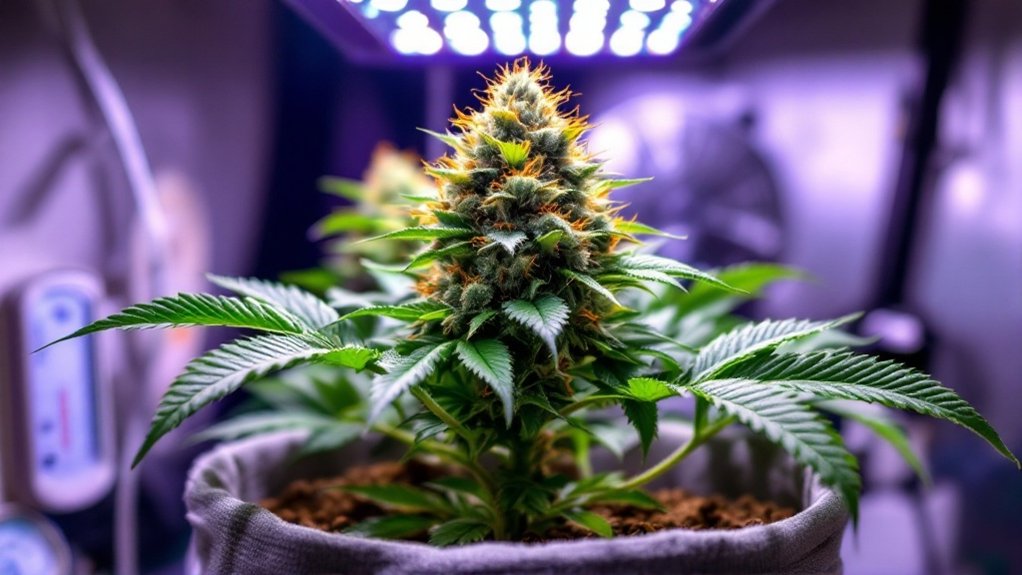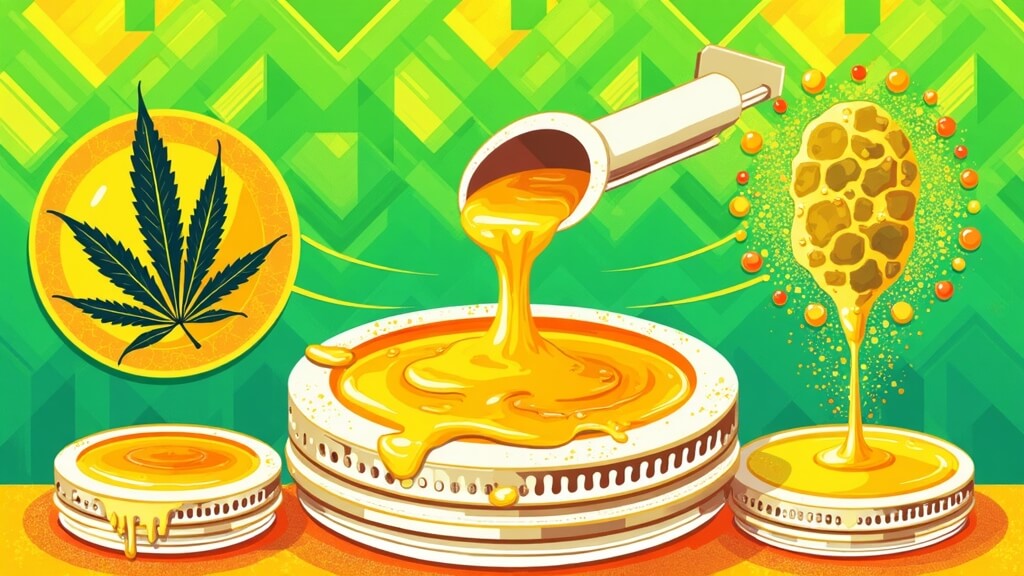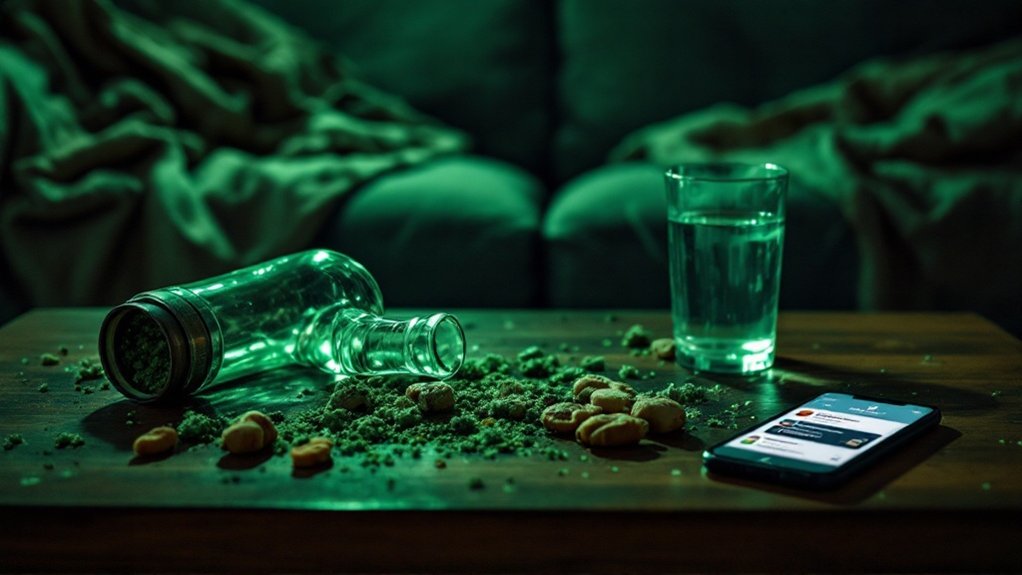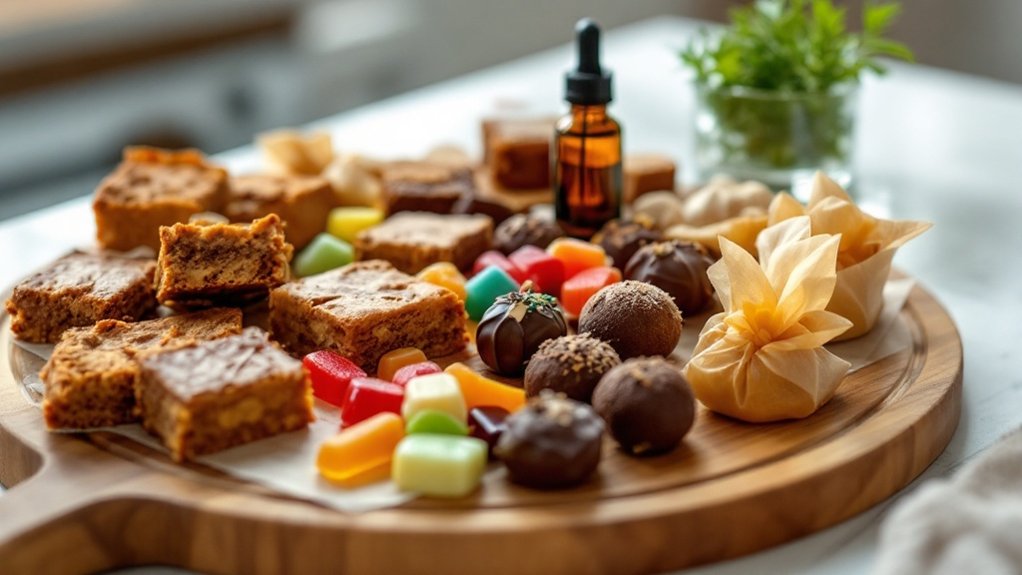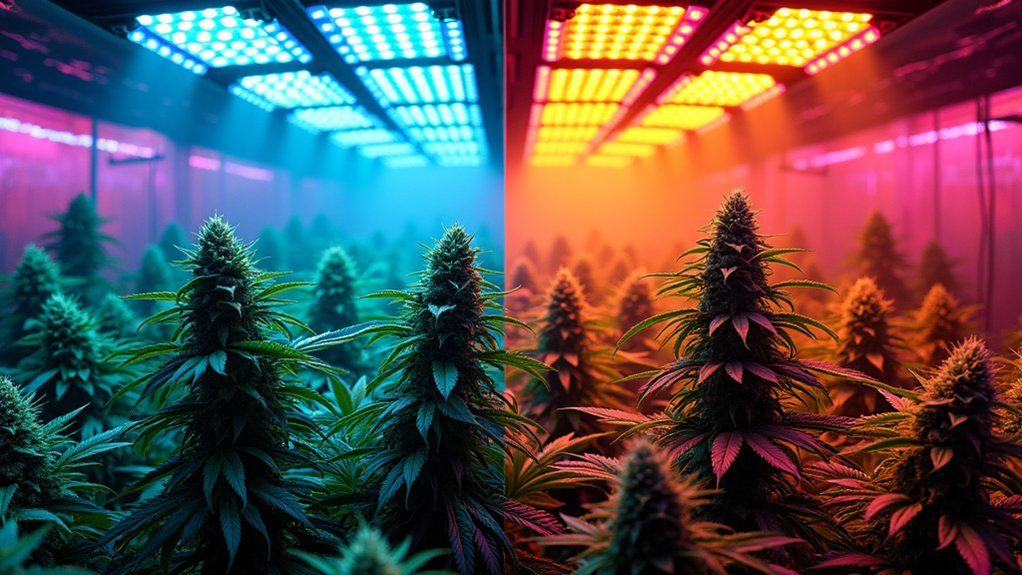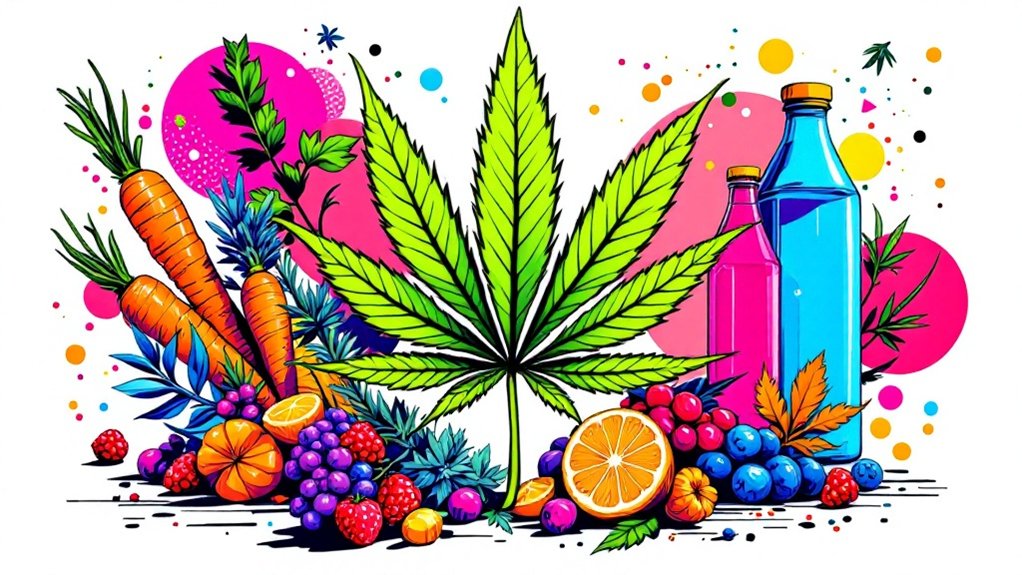Growing autoflowers indoors demands quality genetics from reputable seed banks. Start by germinating seeds in damp paper towels, then plant directly into final containers, no transplanting. Use fabric pots (8.5-15L) with 18-24 hours of LED lighting. Keep temps between 68-77°F with proper humidity control. These plants need fewer nutrients than usual; half-strength feeding prevents disaster. Water thoroughly but infrequently. Harvest timing hinges on trichome development. The right preparation transforms novices into harvest heroes.
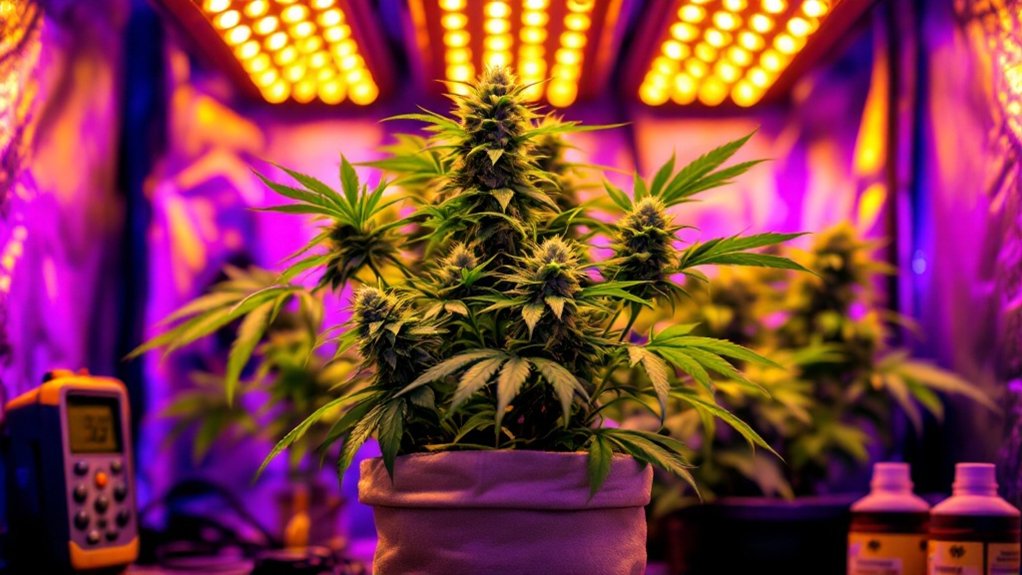
Growing autoflowers indoors can transform even the most inexperienced cultivator into a green-thumbed enthusiast. The process begins with selecting quality genetics from reputable seed banks like FastBuds or Royal Queen Seeds. Not all seeds are created equal. Some strains thrive indoors while others prefer the great outdoors. Smart growers research THC and CBD profiles based on desired effects before making their selection.
Indoor autoflower growing transforms novices into experts through careful strain selection and understanding potency profiles.
Germination follows a simple formula: sandwich seeds between damp paper towels, place somewhere dark and warm, then wait. Within 1-3 days, they’ll sprout. Plant immediately into their final containers. Seriously, don’t even think about transplanting these sensitive little creatures. Autoflowers hate being moved. It stresses them out and reduces yields.
Container selection matters more than you’d think. Fabric pots allow roots to breathe and self-prune. Size matters too – 8.5L works for smaller plants, while larger varieties need 10-15L pots. Dark-colored containers absorb heat, affecting root temperatures. Choose wisely.
These plants crave light, lots of it. Most growers provide 18-24 hours throughout the entire growing cycle. An 18/6 schedule works well, though some push to 20/4 during vegetative growth. Remember that unlike photoperiod plants, autoflowers do not require light cycle changes to induce flowering. LEDs offer energy efficiency with less heat output than traditional HPS systems.
Temperature and humidity demand attention. Keep temps between 68°F and 77°F. Seedlings enjoy higher humidity (60-70%), but flowering plants prefer it drier (40-50%). Proper air circulation prevents hotspots. Use fans. They’re not optional.
Feeding autoflowers requires restraint. They need fewer nutrients than their photoperiod cousins. Start with light soil and feed at half-strength. Overfeeding kills. Water thoroughly but infrequently, allowing partial drying between sessions. Maintain soil pH between 6.0 and 6.5 to ensure nutrients remain accessible to your plants and prevent deficiencies.
In just 8-10 weeks, these miracle plants progress from seed to harvest. Monitor trichome development with magnification to determine perfect harvest timing. Two weeks before harvest, flush with pH-balanced water. The result? Home-grown goodness in record time. No patience required.
Frequently Asked Questions
Can I Grow Autoflowers With Regular Photoperiod Plants?
Growing autoflowers with photoperiod plants? Technically possible, but a logistical nightmare.
Light cycles clash dramatically – autoflowers need 18+ hours while photoperiods require 12/12 to flower. Plus, their growth rates differ wildly. Photoperiods grow larger, potentially overshadowing the smaller autos.
And don’t forget nutrient schedules. Different plants, different needs. Some growers use dividers or separate spaces. Others just shrug and deal with compromised yields.
Not impossible, just complicated.
How Do Autoflowers Respond to High-Stress Training Techniques?
Autoflowers typically struggle with high-stress training. Their accelerated lifecycle leaves little recovery time before flowering kicks in.
Perform HST too late? Yields tank. The math isn’t complicated. While photoperiod plants shrug off stem damage, autoflowers hold grudges.
Some growers report success with careful timing during early veg stage. But let’s be real, many autoflowers end up stunted or stressed.
Recovery time is luxury these speed demons don’t have.
Are Certain Nutrient Brands Better for Autoflower Growth?
Several nutrient brands stand out for autoflower cultivation.
Advanced Nutrients offers tailored blends like Big Bud, easy for beginners.
Fox Farm’s Nutrient Trio prevents common deficiencies.
Canna excels with coco coir setups, while General Hydroponics’ Flora Trio dominates hydroponic systems.
Surprisingly, price doesn’t always indicate quality.
The top contenders Advanced, Fox Farm, Canna, and General Hydroponics all deliver reliable results.
Just follow feeding charts at half-strength. Autoflowers are picky little things.
What Causes Autoflowers to Stay Small Despite Proper Care?
Autoflowers staying small? It’s in their DNA.
These pint-sized plants come with genetic limitations, their ruderalis heritage basically programs them for compact growth. Some seeds are deliberately bred small for stealth growers.
Environmental factors play dirty too: restrictive pots, dense soil, light deficiencies, and pH problems all stunt growth.
Stress is the ultimate size-killer. Early transplant shock or temperature swings? Your auto never recovers. That’s just plant science.
Do Autoflowers Produce Less Potent Buds Than Photoperiod Strains?
Historically, autoflowers have produced less potent buds than photoperiods. That’s changing.
While top photoperiod strains still hit THC levels around 30%, most autos max out at 20%. Blame genetics and growth cycles. Photoperiods benefit from decades of selective breeding and longer vegetative stages to accumulate cannabinoids.
Modern breeding has narrowed the gap, though. Some newer autos rival premium photoperiods but consistency remains an issue.
Speed versus potency: the eternal trade-off.
